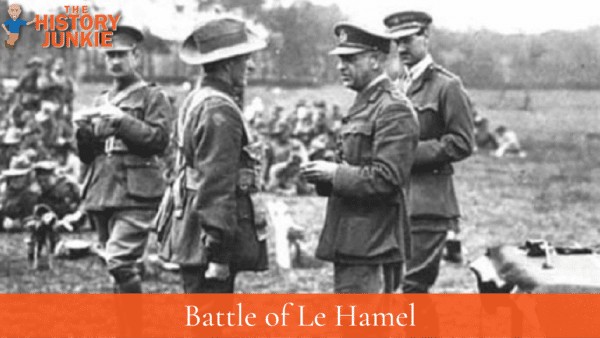The Battle of Le Hamel was a small but successful Allied attack on German positions in northern France on July 4, 1918. It was a necessary precursor to further advances by Sir Henry Rawlinson's Fourth Army on the Western Front in World War 1.

The Battle was the latest in a series of Allied successes. The German army was demoralized and weakened by the influenza pandemic, and the Allies were taking advantage of this.
The attack on Le Hamel was intended to straighten the salient opposite Rawlinson's Fourth Army east of Amiens. The capture of Le Hamel and its flanking woods would remove the danger of German flanking fire during subsequent large-scale artillery operations conducted by Rawlinson.
The Battle
The operation was overseen by Australian commander John Monash and executed by his 4th Division. Monash, an advocate of "peaceful penetration," made effective use of mass machine guns and heavy tanks (some 60 of the latter) while ensuring absolute secrecy in planning.
He also eschewed the usual tactic of preliminary bombardment, which invariably served only to warn the enemy that an attack was imminent.
The operation was not exclusively an Australian affair. Four U.S. companies, currently training with the Australians, were also drafted in.
On July 4, 1918, the Australians and Americans launched a coordinated attack on German positions using tanks, artillery, and warplanes.
The Germans were caught entirely by surprise, and the Allies easily captured Le Hamel and its woods in just 93 minutes. The German line was effectively straightened, and the salient was removed.
The Allies suffered approximately 1,000 casualties, but they captured some 1,500 German prisoners. The Battle of Le Hamel was a significant victory for the Allies, and it helped to turn the tide of the war in their favor.
